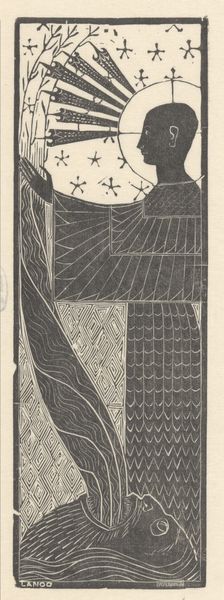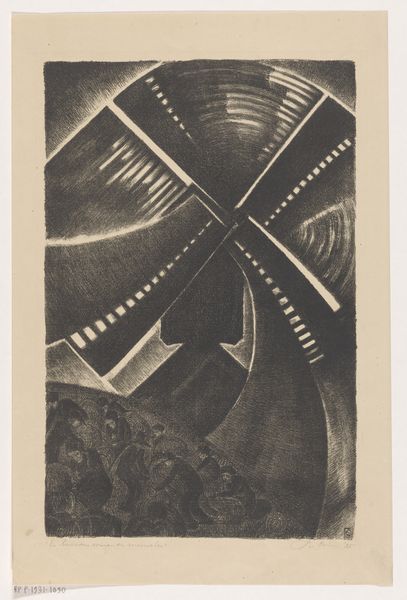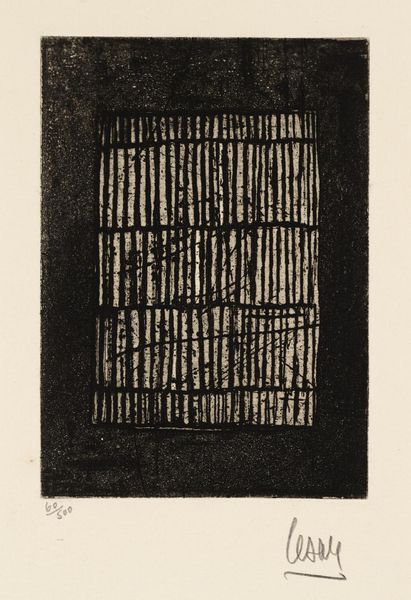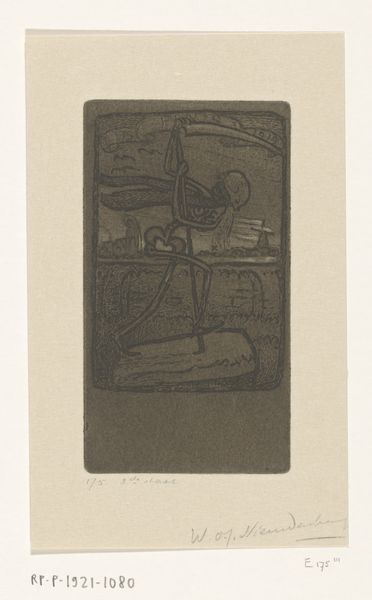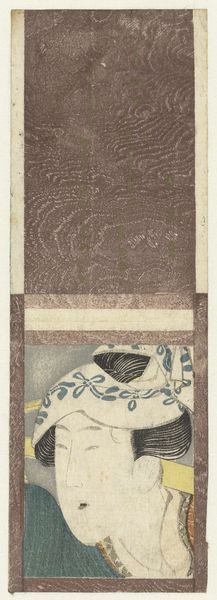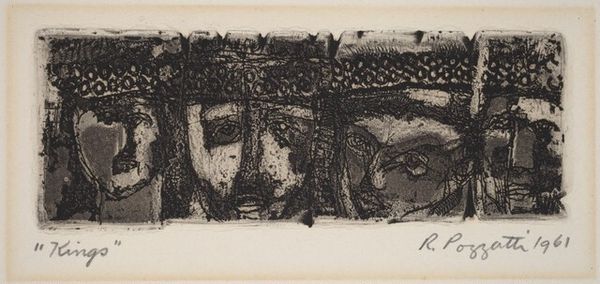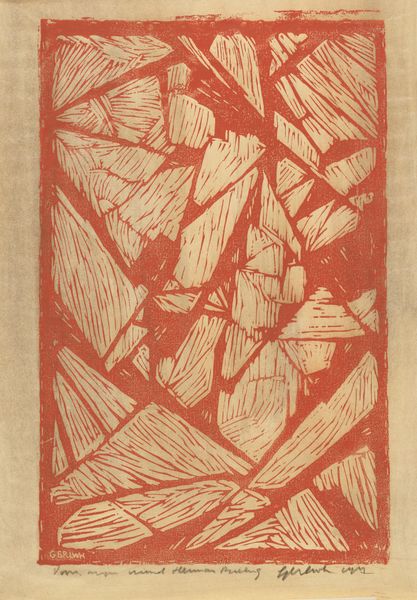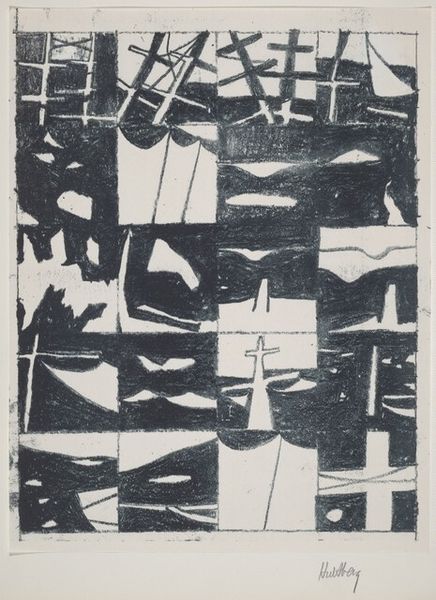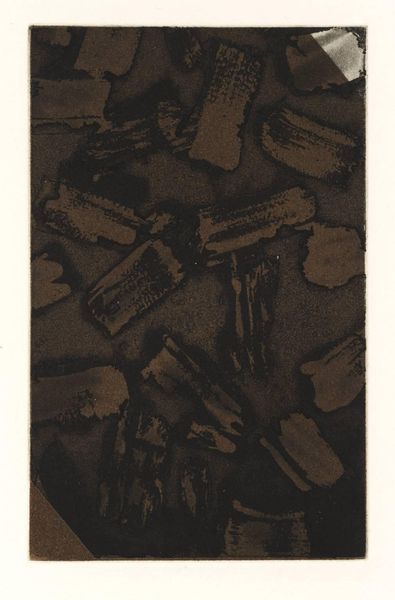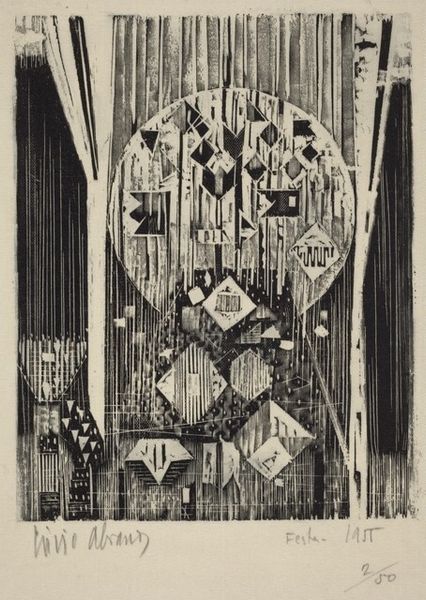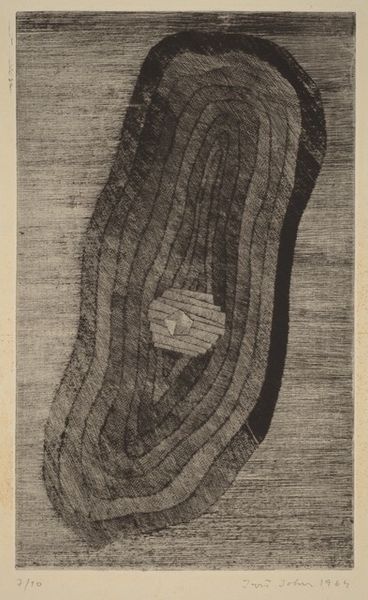
print, etching, intaglio
# print
#
etching
#
intaglio
#
landscape
#
white palette
#
geometric
#
abstraction
#
line
#
monochrome
Dimensions: plate: 11 x 60 cm (4 5/16 x 23 5/8 in.) sheet: 12.6 x 76 cm (4 15/16 x 29 15/16 in.)
Copyright: National Gallery of Art: CC0 1.0
Curator: Let’s spend a moment with Fred Cain’s "Landscape," an etching and intaglio print, rendered in monochrome. It immediately strikes me as…severe. Austere, almost. Editor: Yes, severe is a good word. The strong geometric forms, the stark contrast—it’s visually quite commanding, isn't it? I’m curious about Cain's process. The textures created through etching and intaglio must have required intense labor. It's interesting how the abstract nature of the image challenges the viewer to make meaning from these material choices. Curator: Absolutely. Consider too the context of printmaking as a democratic art form. How does the presumed reproducibility, often associated with print, play against the very tactile, and labor-intensive process evident in this piece? Does this complicate or expand our understanding of landscape art? Editor: It certainly pushes at the boundaries. There's this sense of controlled chaos in the upper register, those organic pebble shapes. How does this geometric organization create its meaning, or comment on ideas of land ownership and human cultivation? Curator: Those forms contrast with the strict horizontal lines that suggest the sea, almost regimented. And then, below, the solid form of…a mountain? A building? A structure? The image's strength, perhaps, comes from its resistance to easy categorization. And to whose land do we think of when viewing landscape art such as this one? Editor: Right, we, as viewers, are conditioned to consume landscapes in a particular way, through calendars, postcards, national parks. Is this piece critiquing that commercialized gaze? By reducing it to these essential forms, does Cain disrupt that flow of imagery? Curator: He is absolutely deconstructing our comfortable notions of "landscape," of ownership and access of it. He’s stripping away the picturesque and leaving us with…what? Bare bones, really. Editor: Precisely! I'm drawn to think about Cain's material choices now in connection with the land from which it may be constructed, both its access and its use by human populations. What might his background or personal experiences say about this piece as it interacts within the artistic ecosystem of landscape as it appears in art galleries and museums? Curator: An incisive point. His piece becomes a social object within an historical, evolving visual language. Food for thought as we move on to the next piece! Editor: Indeed. I find the focus on both making and context truly gives this piece added depth.
Comments
No comments
Be the first to comment and join the conversation on the ultimate creative platform.
